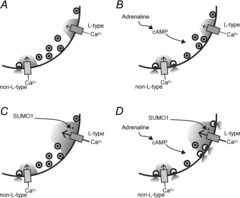Figure 8. Schematic hypothesis for the interaction between SUMOylation and cAMP on glucagon secretion.

A, in the absence of elevated cAMP or SUMO1, glucagon exocytosis is triggered by Ca2+ entry through non-L-type Ca2+ channels. B, in response to elevated cAMP, such as that stimulated by adrenaline, glucagon granules become more coupled to L-type channels. However, the majority of glucagon exocytosis remains mediated by the non-L-type Ca2+ channels. C, increased SUMOylation enhances L-type Ca2+ channel currents in α-cells, but in the absence of the increased coupling of glucagon granules to these channels conferred by elevated cAMP, this does not result in increased glucagon exocytosis. D, only when cAMP is elevated, and the coupling of glucagon granules to L-type Ca2+ channels is increased, does SUMOylation increase glucagon exocytosis as a result of increased L-type Ca2+ current.
